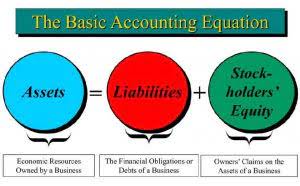Bookkeeping
Notes Receivable in Accounting

The format of this illustration is also intended to introduce you to a concept you will learn more about in your study of accounting. Notice each account subcategory (Current Assets and Noncurrent Assets, for example) has an “increase” side and a “decrease” side. These are called T-accounts and will be used to analyze transactions, which is the beginning of the accounting process. See Analyzing and Recording Transactions for a more comprehensive discussion of analyzing transactions and T-Accounts. Let’s continue our exploration of the accounting equation, focusing on the equity component, in particular.
What are the important components of notes receivables?
Student loans are a specialtype of consumer borrowing that has a different structure forrepayment of the debt. If you are not familiar with the specialrepayment arrangement for student loans, do a brief internet searchto find out when student loan payments are expected to begin. Since notes receivable have a longer duration than accounts receivable, they usually require the maker to pay interest in addition to the principle, at the maturity of the note.

Non-Trade Receivables
A company’s auditors will examine the classification of notes receivable from the most conservative perspective, and so will insist on their classification as short-term if there are reasonable grounds for doing so. In general, firms write off non-trade receivables in the year in which they are known to be uncollectible instead of providing for the loss in an earlier period. If appropriate, the receivable should be clearly identified and listed on the balance sheet. If the duration is longer than twelve months, they will be considered as a non-current asset. They will be considered short-term assets if they can be expected to be collected in full within twelve months or less.
- Cash or bank is debited by the sum of principal amount and interest not yet received.
- If a restaurant purchases $25,000 of new equipment on credit from a restaurant supply store, the supplier will send the restaurant owner an invoice for the purchase.
- What distinguishes notes receivables from accounts receivable is that they are issued as a promissory note (a formal legal agreement given as a written note promising to pay principal plus interest at a specific date).
- For non-current asset classification, the company must reevaluate the note receivable at the end of each accounting period to identify if its classification has changed.
How much will you need each month during retirement?
In accounting , notes receivable are recorded as an asset on the balance sheet. To be precise, a payee records a note receivable as an asset, representing the principal owed by the customer. The related interest income from the note receivable is recorded in the income statement. Accounts receivable represent amounts owed for goods or services provided on notes receivable current or noncurrent credit without necessarily formalized terms. In contrast, notes receivable involve written promises to pay a specified amount by a certain date, often with interest. In this example, the table includes columns for the customer’s name, the invoice amount, the payment terms (indicating when the payment is due), and the due date for each customer’s invoice.
- Additionally, a note receivable often includes a predetermined interest rate.
- This example shows actual disclosures of non-trade receivables from Pitney-Bowes, Inc. and Rockwell International Corporation.
- The payee holds the note and is, therefore, due to receive a payment from the payer.
- The allowance reflects management’s estimate of the likelihood that some receivables will not be collected and is based on historical experience, current conditions, and reasonable and supportable forecasts.
- We may earn a commission when you click on a link or make a purchase through the links on our site.
The supply store will record a journal entry of $25,000 in the debit column of the general ledger for notes receivable. At the same time, it will also enter a credit of the same amount for the original accounts receivable to cancel out that transaction. When this happens, the accounts receivable has been converted to notes receivable. Some of the notes receivable examples include overdue accounts (accounts receivable of the business) that are converted into notes receivable, giving debtors more time to pay them back. It may also include employee cash advances, loan agreements, sales agreements, etc.

The $18,838 is recovered over the life of the note as interest income ($8,928 + $9,910). In this situation, stockholders may want to know that the corporate funds are being loaned to officers. However, they require special disclosure because of the fact that the loan is a non-arm’s-length transaction between related parties.
How Are Notes Receivable Recorded?
Recall, too, thatrevenues (inflows as a result of providing goods and services)increase the value of theorganization. So, every dollar of revenue an organization generatesincreases the overall value of the organization. Notes Receivables are promises to pay a certain sum on a specified future date.
It is calculated as ($50,000 x 6%) multiplied by the ratio of days outstanding to 365 (183/365). The note presents all terms and conditions transparently to remove any possible misunderstandings between the parties in the future. Notes can also find application in the context of property, plant, and equipment sales or the exchange of long-term assets. Upgrading to a paid membership gives you access to our https://www.bookstime.com/ extensive collection of plug-and-play Templates designed to power your performance—as well as CFI’s full course catalog and accredited Certification Programs. We follow strict ethical journalism practices, which includes presenting unbiased information and citing reliable, attributed resources. At Finance Strategists, we partner with financial experts to ensure the accuracy of our financial content.

For example, one month from July 18 is August 18, and two months from July 18 is September 18. If a note is issued on the last day of a month and the month of maturity has fewer days than the month of issuance, the note matures on the last day of the month of maturity. Frequency of a year is the amount of time for the note and can be either days or months. We need the frequency of a year because the interest rate is an annual rate and we may not want interest for an entire year but just for the time period of the note. To help you gain a better understanding, let’s discuss in detail what notes receivable are and how they work in business transactions. Notes receivable are written commitments made by individuals or businesses to pay a specific amount of money at a predetermined date or upon request.


Leave a reply